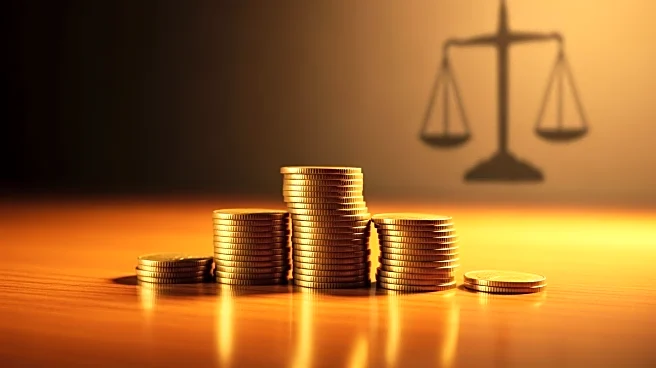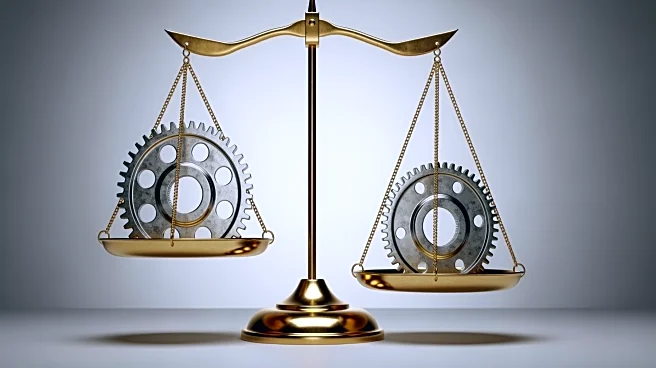What's Happening?
President Trump has proposed a new stimulus payment of $2,000 per person, funded by tariffs imposed by his administration. The proposal was announced via a post on Truth Social, where Trump emphasized
the financial benefits of tariffs, claiming they have made the U.S. the richest and most respected country globally. The plan excludes high-income individuals, though specific eligibility criteria have not been detailed. The U.S. Treasury Department reported $195 billion collected in tariff duties this year, with projections suggesting significant revenue generation over the next decade. However, Treasury Secretary Scott Bessent indicated that the rebates might take different forms, such as tax cuts, and confirmed that no formal plan is currently in place.
Why It's Important?
The proposal for a stimulus check funded by tariffs could have significant implications for U.S. economic policy and public finances. If implemented, it could provide direct financial relief to millions of Americans, potentially boosting consumer spending and economic activity. However, the plan faces skepticism due to concerns about the adequacy of tariff revenues to cover the costs, and the legality of the tariffs is under review by the Supreme Court. The proposal also highlights ongoing debates about the use of tariff revenues and fiscal policy priorities, such as debt reduction versus direct payments to citizens.
What's Next?
The Supreme Court is currently reviewing the legality of President Trump's tariffs, with a decision expected before the end of the year. This ruling could impact the feasibility of using tariff revenues for stimulus payments. Additionally, the administration may explore alternative forms of financial relief, such as tax cuts, as suggested by Treasury Secretary Bessent. The political and economic implications of the proposal will likely continue to be debated among policymakers and stakeholders.













